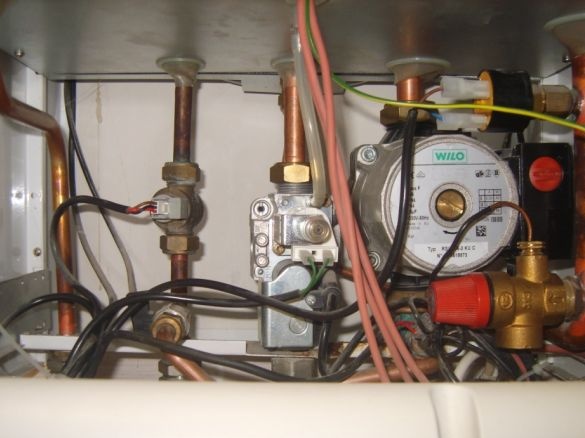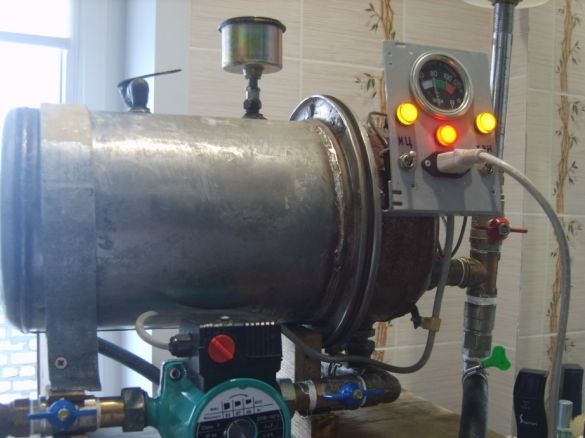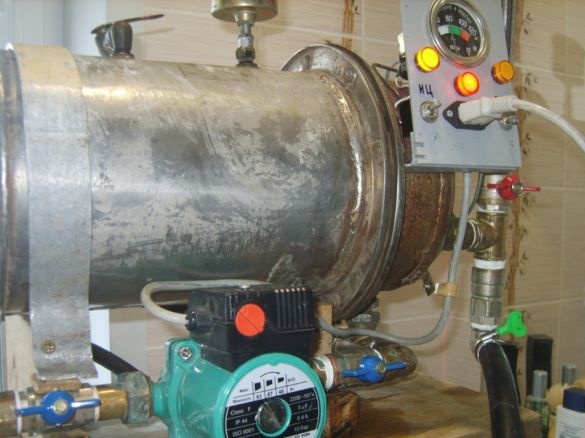But no gods make pots. Having rummaged in his "bins", he assembled the necessary set of B \ U components (so as not to buy). The task is to create a wash liquid flow through the heat exchanger (without removing it from the installation), heat the wash liquid, and control the heating temperature (in the machine).
Everything is very simple done, I can report the details separately.
Here is a view of the insides of a gas boiler (wall-mounted), (there are no step-by-step photos of manufacture) for me not to show off.
Connect flushing hose to the unit. The end of the flushing unit is visible in the mirror.
The Dusya assembly itself. )))




